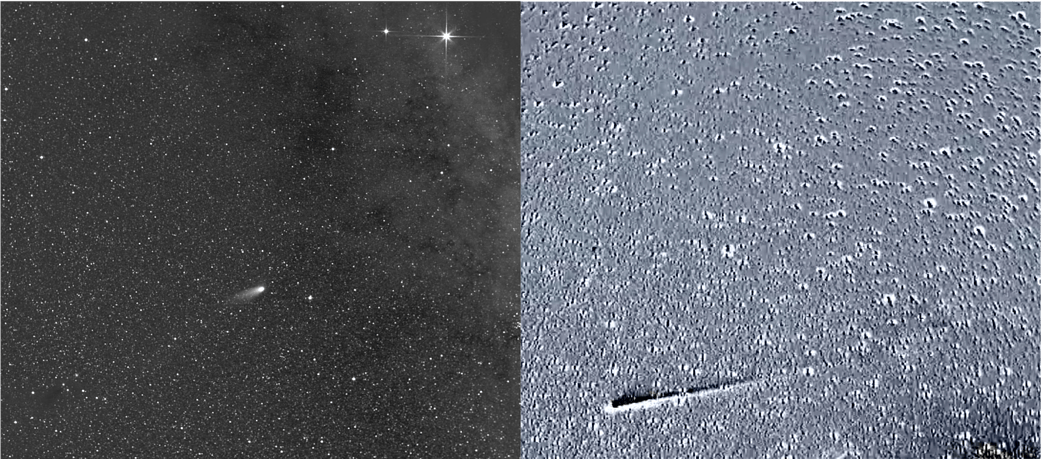Since early this year, skywatchers on Earth have been tracking Comet Leonard, a kilometer-wide dirty snowball made of ice, rock and dust. Now, as it heads towards a close encounter with the Sun on January 3, 2022, several spacecraft – with the distinct advantage of having an unobstructed front-row seat to the action – have been keeping an eye on how the comet is changing and evolving as it heats up.
In particular, two satellites designed to observe the Sun have captured recent video of the brightening Comet Leonard as it speeds past the Earth for the first time in 80,000 years.
The Solar Orbiter Heliospheric Imager (SoloHI) captured an incredible animated sequence of images late last week (Dec. 17-19) that shows Comet Leonard streaking diagonally across the field of view. The Milky Way can be seen, as well as Venus and Mercury, visible in the top right. Venus is brighter and moves from left to right.
An amazing view!
When SoloHI took these images, the comet was approximately between the Sun and the spacecraft, with the comet's gas and dust tails pointing towards the spacecraft. Toward the end of the image sequence, the view of both of the tails improves as the viewing angle at which we see the comet increases, and SoloHI gets a side-on view of the comet.
Loading tweet...
— View on Twitter
Another animated image was taken by NASA's STEREO-A (Solar Terrestrial Relations Observatory) spacecraft, with its SECCHI/HI-2 telescope. This spacecraft has watched the comet since early November. NASA explained that this animated "difference image" was created by subtracting the current frame from the previous frame to highlight differences between them. Difference images are useful for seeing subtle changes in Leonard's ion tail (the trail of ionized gases streaming from the comet's body, or nucleus), which becomes longer and brighter toward the end of the clip.
Comet Leonard made it closest approach to Earth on December 12, coming within 21 million miles (34 million kilometers). The comet is visible in both the Northern and Southern hemispheres until the end of December.
It was discovered by astronomer Gregory Leonard at the Mount Lemmon Observatory near Tucson Arizona. The long-period comet's official name is C/2021 A1 Leonard. At the time of its discovery, it was about 5 Astronomical Units (AU) distant (about the distance of Jupiter from the Sun).
Even if Comet Leonard survives its trip around the Sun, we won’t ever see it again. It will be ejected from the solar system after its perihelion passage. At its most distant, the comet reached aphelion at 3,500 AU distant in the Oort Cloud about 35,000 years ago. On January 3rd, 2022, it will be just 0.62 AU from the Sun, inside the orbit of Venus.
 Universe Today
Universe Today
